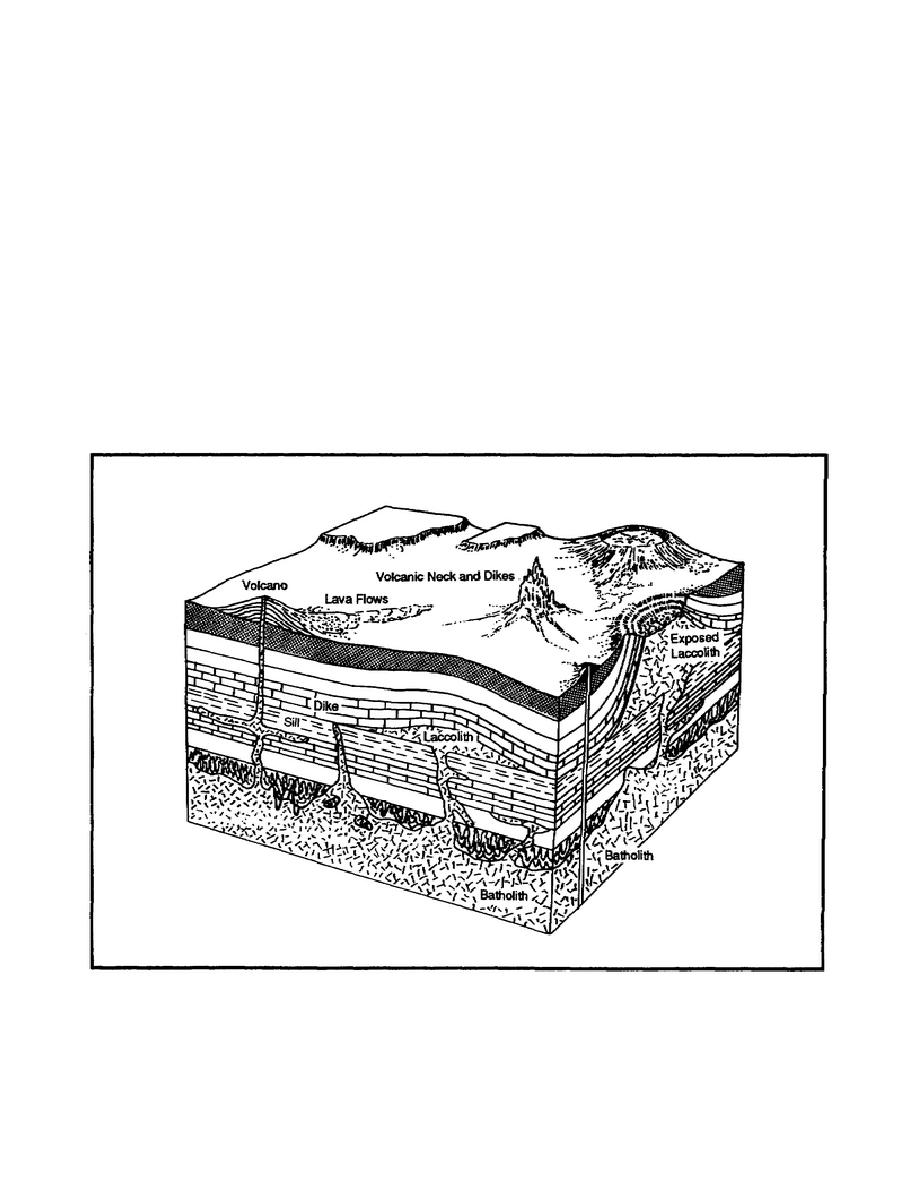
Occasionally, igneous rocks of intermediate texture occur. Such rocks began to cool at depth so that a number of
large crystals were formed. However, before the magma had a chance to completely solidify, it was forced
further upward, allowing for more rapid cooling and the formation of correspondingly smaller crystals. The
resulting rocks, which have several large crystals, or phenocrysts, embedded in a finer matrix, or ground mass, are
said to exhibit porphyritic texture.
A final category of igneous rock, which is classified based on the mode of formation rather than on texture, is that
of pyroclastic rocks. They are composed of individual volcanic rock fragments that were explosively or aerially
ejected from a volcano and subsequently lithified, or cemented. Because these types of rocks are formed above
the earth's surface, they are considered to be a type of extrusive igneous rock.
Characteristic rock bodies occur for both intrusive and extrusive igneous rocks. The most predominant of these is
illustrated in figure 1-3.
a. Intrusive Igneous Rocks.
(1) Characteristic Intrusive Rock Bodies. Several different types of intrusive igneous rock bodies can
be distinguished based on their relationships with the structure of the intruded, or country rock (see figure 1-3).
Figure 1-3. Intrusive and extrusive rock bodies
EN5341
1-6



 Previous Page
Previous Page
